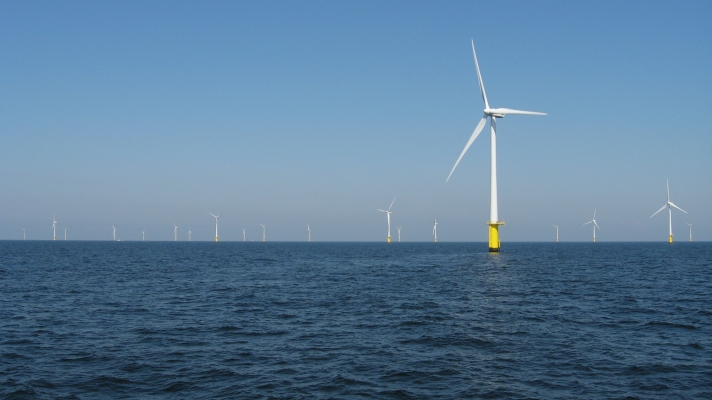Rapid advances in offshore wind technology, making turbines bigger and more powerful, are currently outpacing the infrastructure capacity needed to install them. London-based data supplier IHS Markit warns against this in a new report on the development of the offshore wind market.
According to this Offshore Wind Turbine Installation Vessels market report offshore wind annual gross capacity additions are expected to grow sixfold by 2030 due to dramatic cost reductions, advances in technology, favorable policies and ever-increasing national targets. However, the industry needs to rapidly develop and invest in new infrastructure to achieve these ambitious plans, the report says.
15 MW
Most critically, the current offshore wind turbine installation vessel (WTIV) fleet is unable to install the new larger 15+ MW turbines that will be hitting the market in the next three years, according to the report. Today’s largest wind turbines have a capacity of about thirteen megawatts.
[UPDATE: SUBMITTED COMMENT] This claim has been refuted, however, by Heerema Marine Contractors. CEO Koos-Jan van Brouwershaven has let SWZ|Maritime know that IHS Markit is ‘not aware of the correct facts’. ‘He adds: ‘Our ships the Thialf and Sleipnir are already suitable to install these 15 MW turbines using dynamic positioning. Even 20 MW turbines are part of the possibilities but do require an adjustment of the crane boom.
‘Offshore wind turbines are constantly getting bigger and more powerful, reducing costs, improving competitiveness and opening new markets. However, that presents a new challenge,’ says Andrei Utkin, principal analyst, Clean Energy Technology at IHS Markit. ‘As new developments are moving further offshore and into deeper waters, logistics, transit and installation become more complex and require larger specialised self-propelled jack-up vessels with technical capabilities far beyond the existing fleet.’
WTIV fleet concentrated in China and Northern Europe
According to the report, the global WTIV fleet currently consists of about fifty vessels. About two-thirds are Chinese and only operate there. Most of the rest is concentrated in Northern Europe and busy working in the North Sea. This means it requires significant time and expense to travel for installations elsewhere. Countries outside these regions will therefore face significant roadblocks to expanding offshore wind capacity unless new vessels for other regional markets are rapidly built.
The United States has targeted a particularly ambitious offshore wind goal of 30 GW by 2030, but despite the restrictive terms of the Jones Act, the only US–built and flagged WTIV is not set to enter service until 2023.
Also read: ‘The time to order offshore installation vessels is now’
Foreign contractors are in principle not allowed to work in US waters under the controversial Jones Act. IHS Market says the country should either relax its maritime rules to permit foreign-built vessels to operate in its waters or ensure new heavy-weight vessels are built and put into service promptly.
At least four new WTIVs needed
IHS Markit projects that the industry will need to invest a minimum of USD 1.2 to two billion to build at least four new vessels to meet global demand from 2026, outside of mainland China. Depending on where these vessels are built, the total cost may be significantly higher if local content requirements are taken into consideration, particularly in the emerging offshore wind markets of the United States and Asia Pacific.
Utkin: ‘Although six new vessels currently under construction are expected to come online by 2023, absent further investment the global fleet would still experience difficulties to cover the global demand in 2026/27 and would most certainly fail to do so post-2028. As a result, at least four additional WTIVs are needed to cover the expected demand to 2030.’
Stabilisation and standardisation
While seven companies have announced the intention to build up to sixteen new vessels, these are not firm contracts and final investments have yet to be secured. But conditions for investment are improving as turbine sizes stabilise and the technical capabilities for installing them become increasingly standardised, according to the report.
‘One of the reasons for the lack of investment in newbuild turbine installation vessels in the past was concerns over the longevity of the vessels as turbine technology was developing rapidly,’ says Utkin. ‘Now that turbine sizes have somewhat stabilised, with more standardised technical capabilities required for vessels, you are finally seeing newbuilds being ordered. We expect that with the rise of the emerging offshore wind markets and first commercial projects coming online, investors and owners will be increasingly willing to finance and build new vessels.’
Also read: ‘Shortage of offshore installation vessels looms by 2025’








